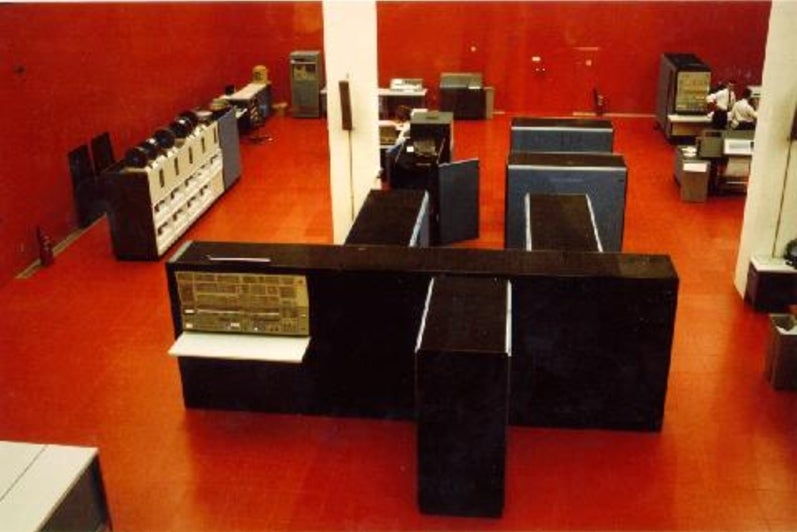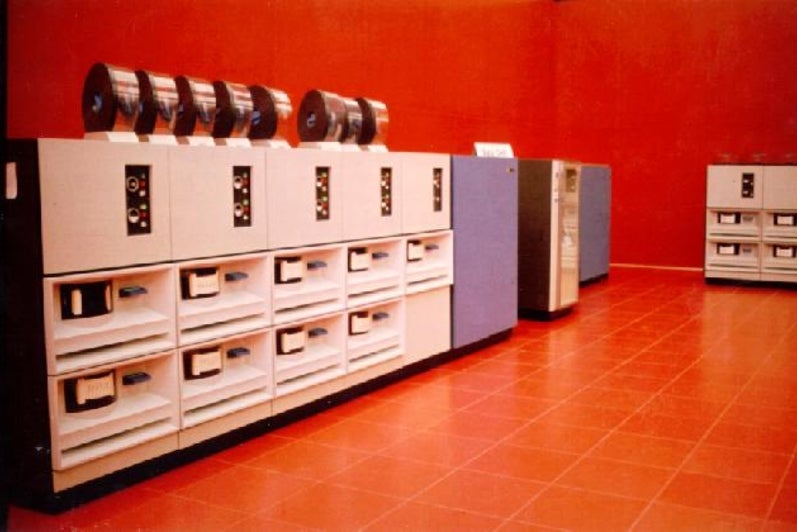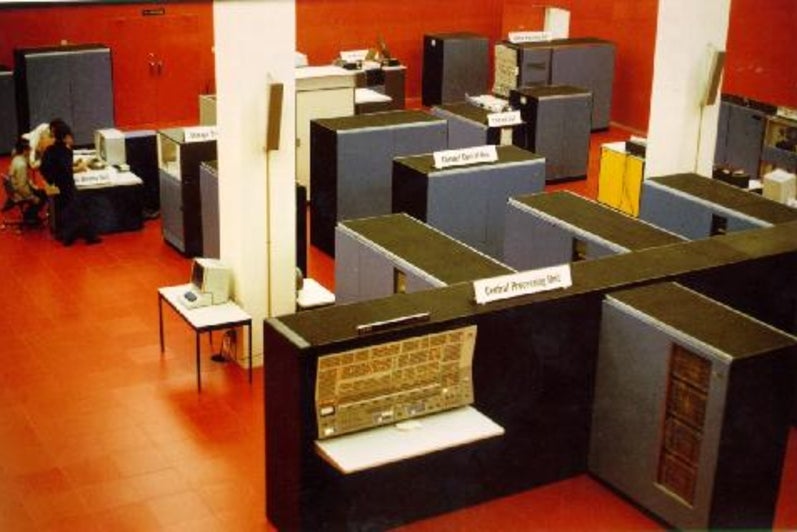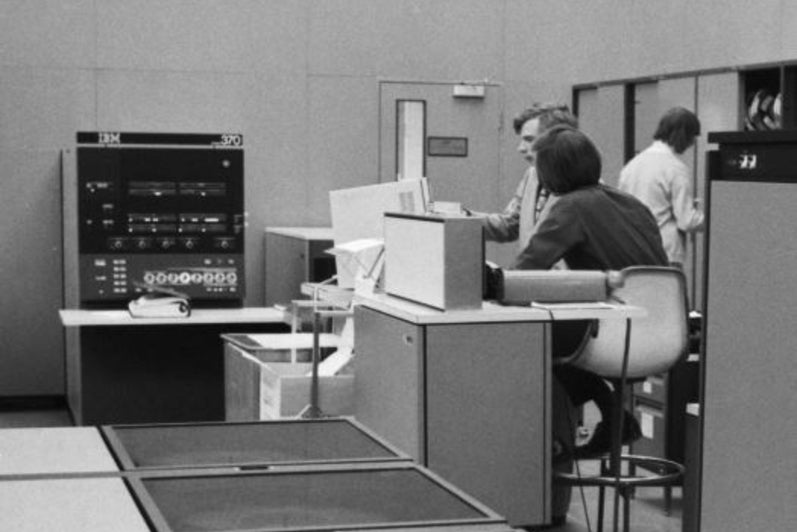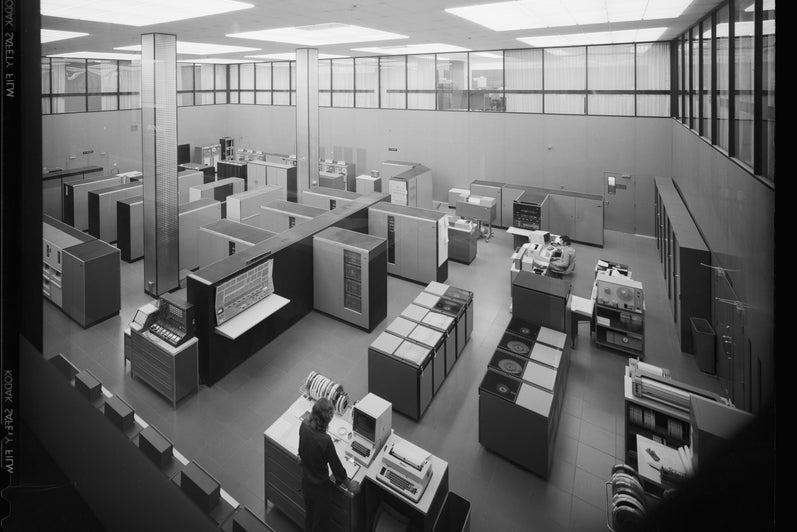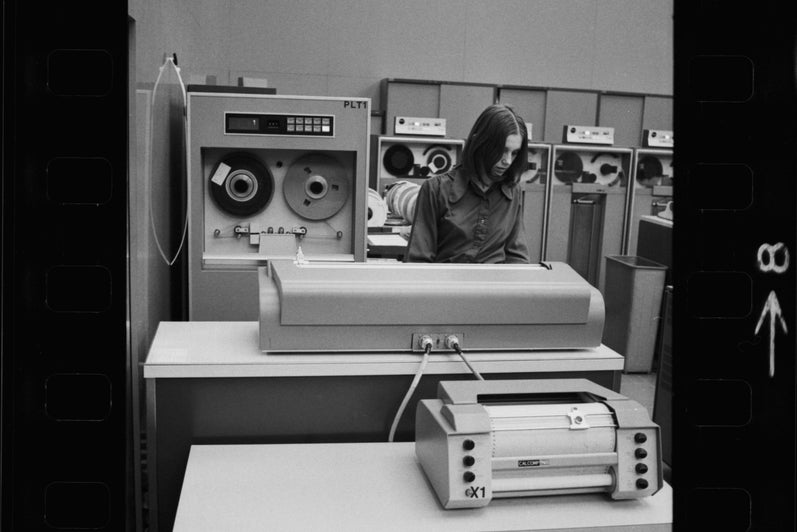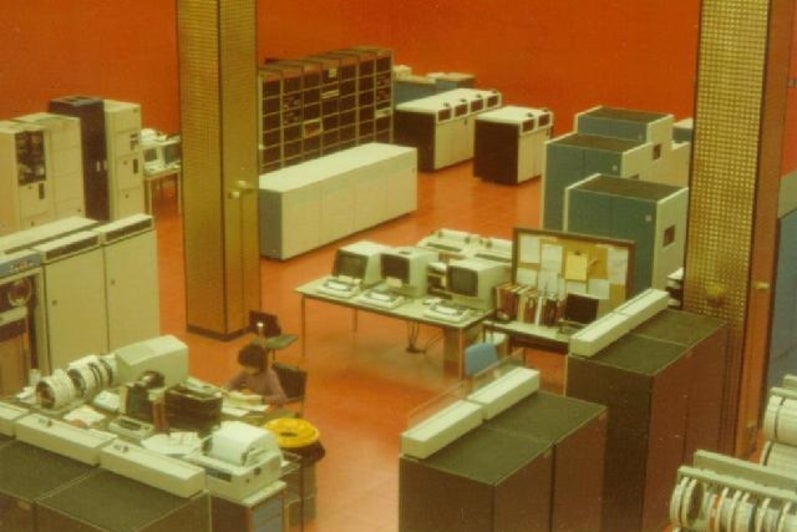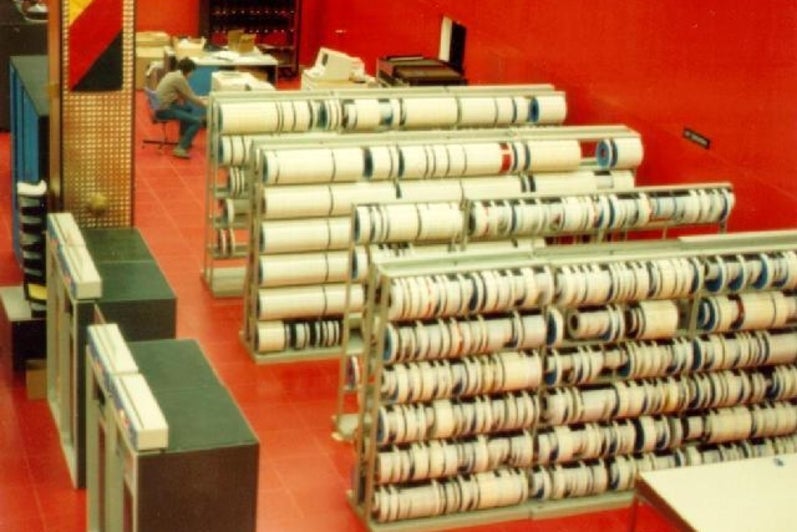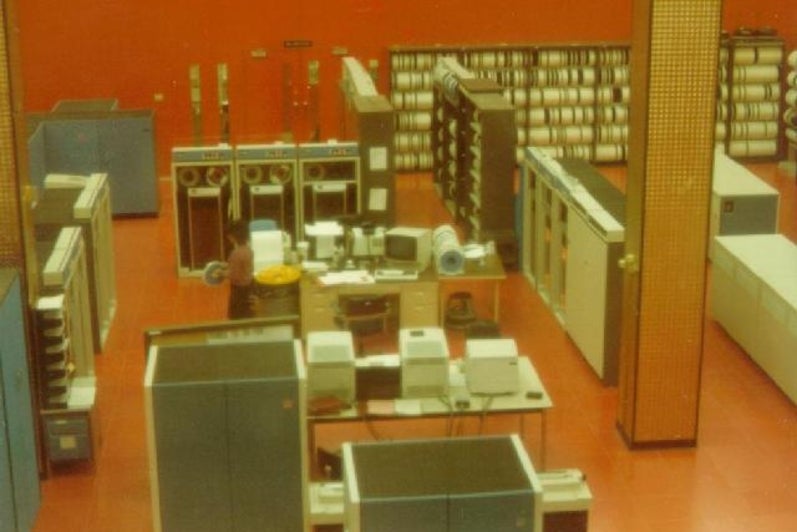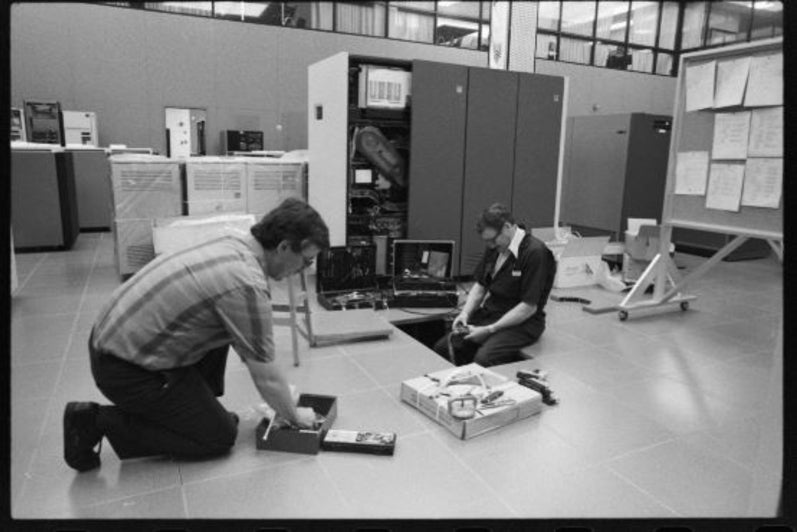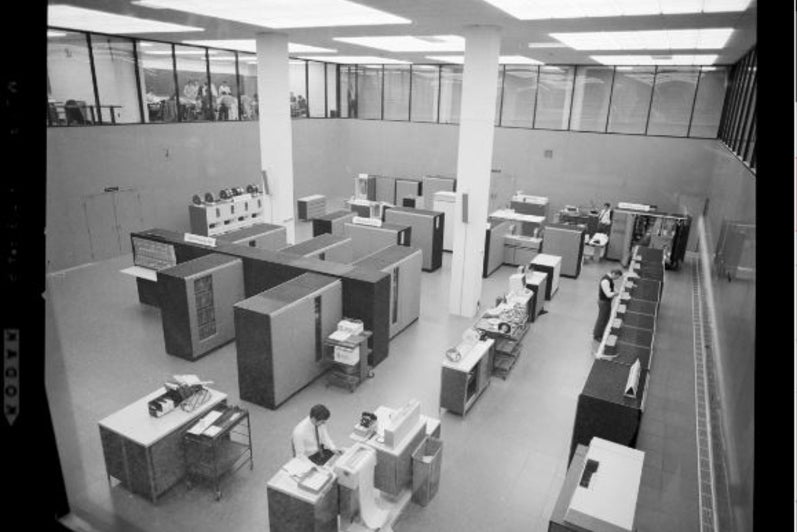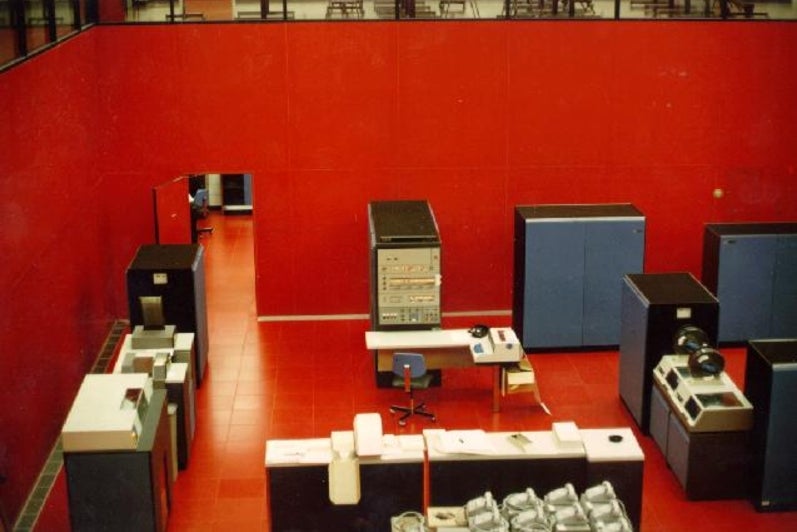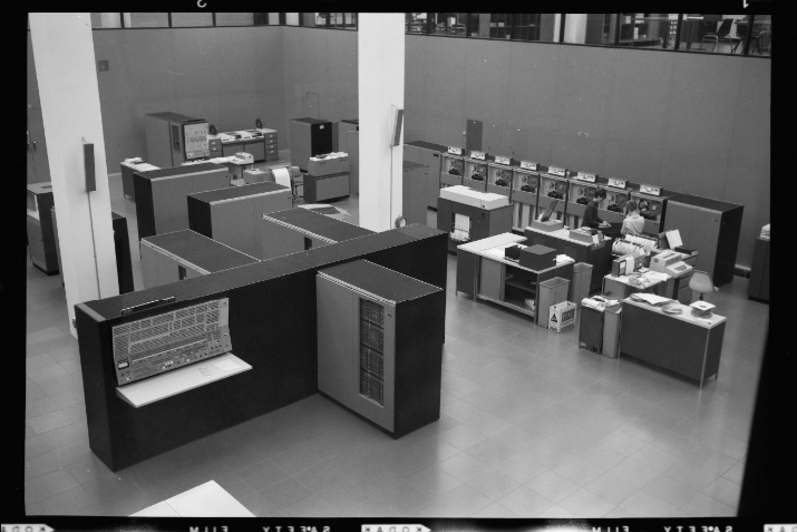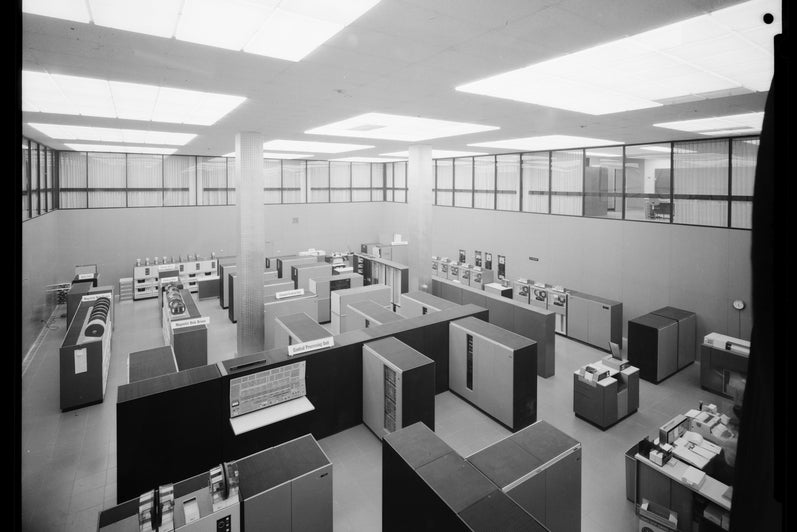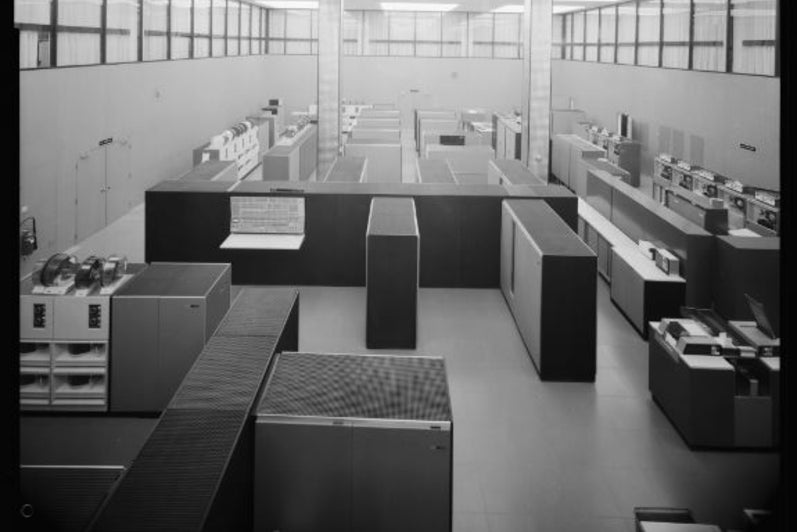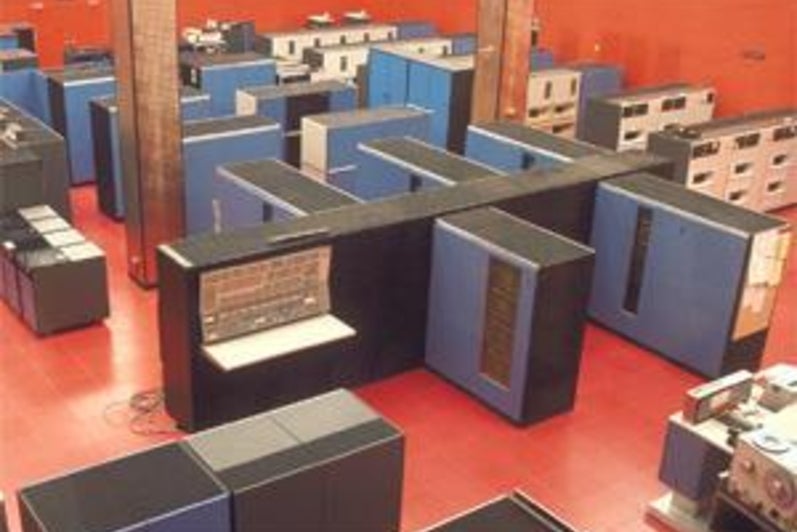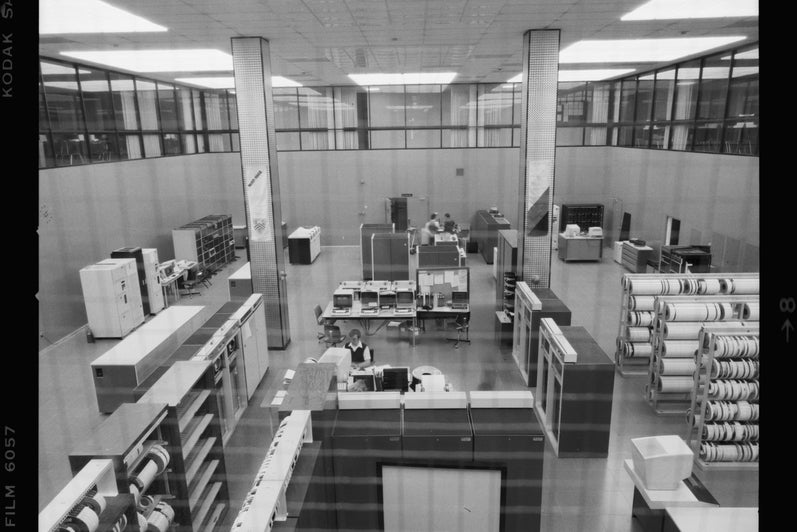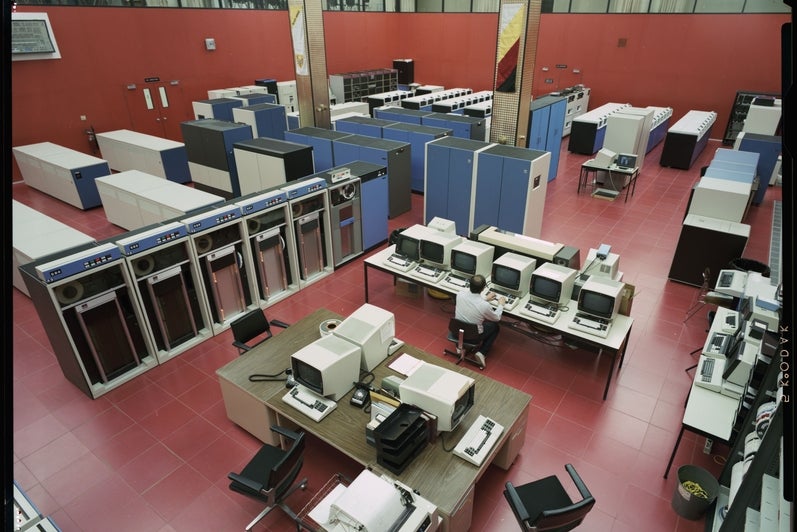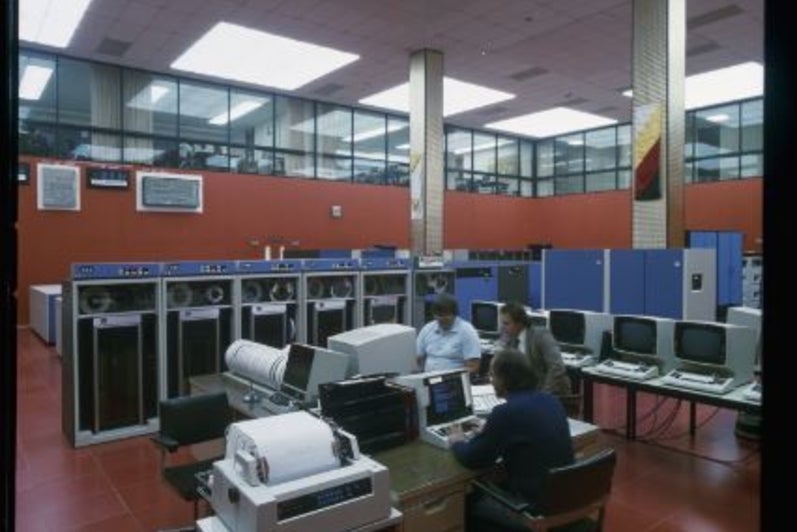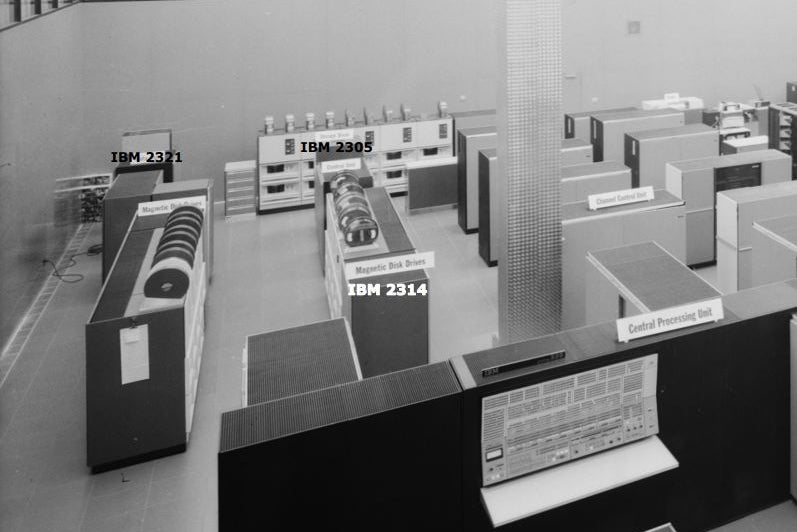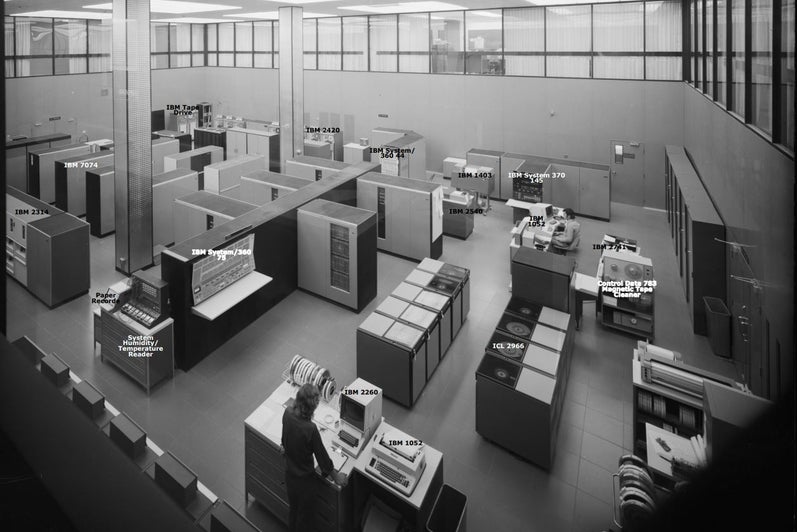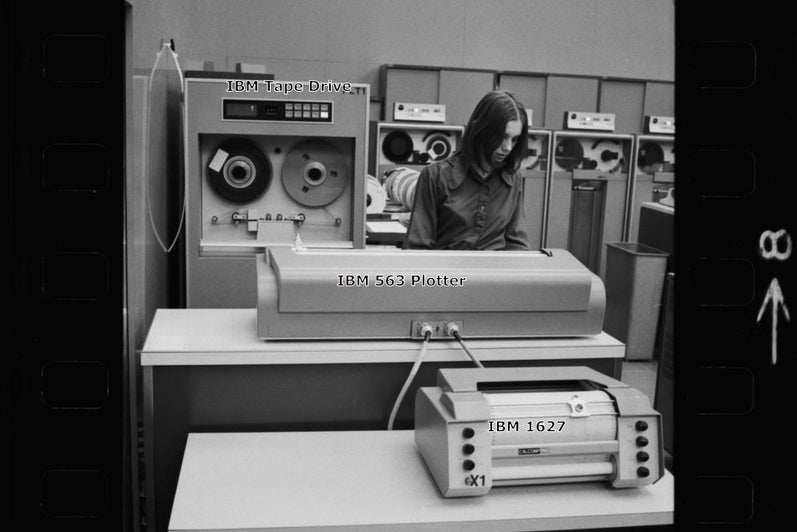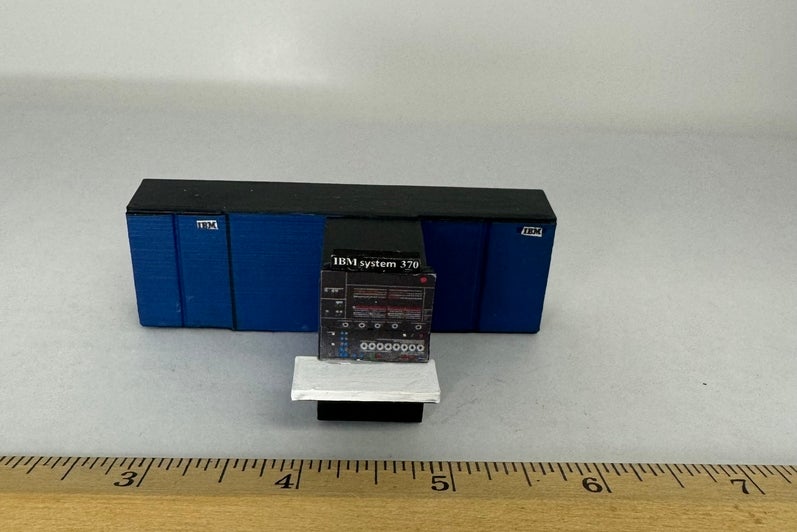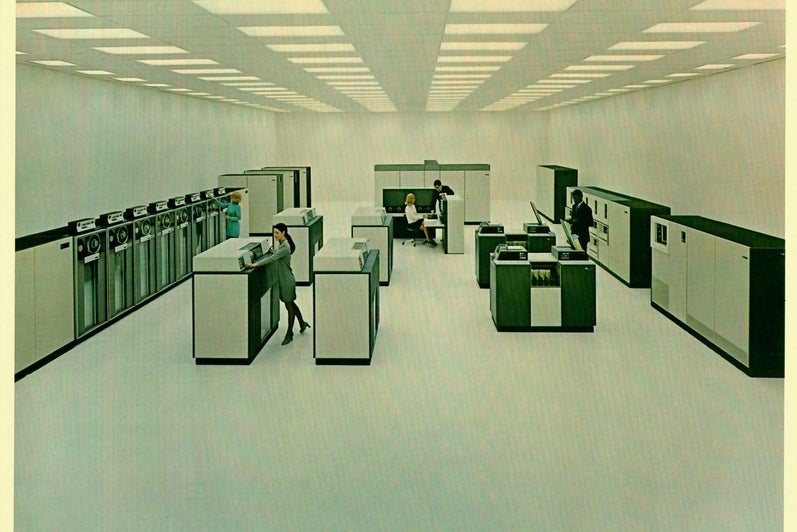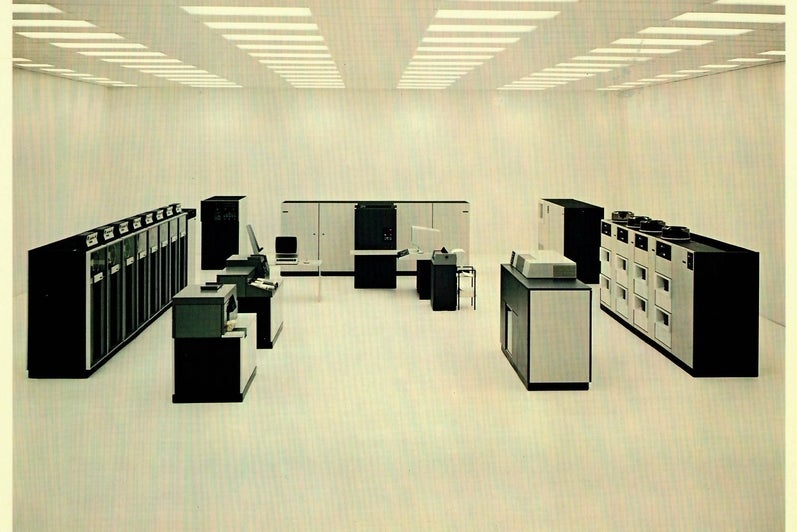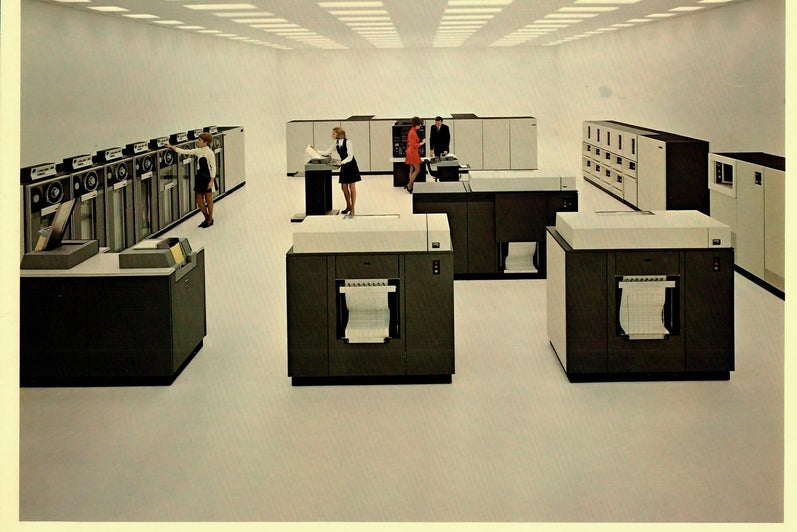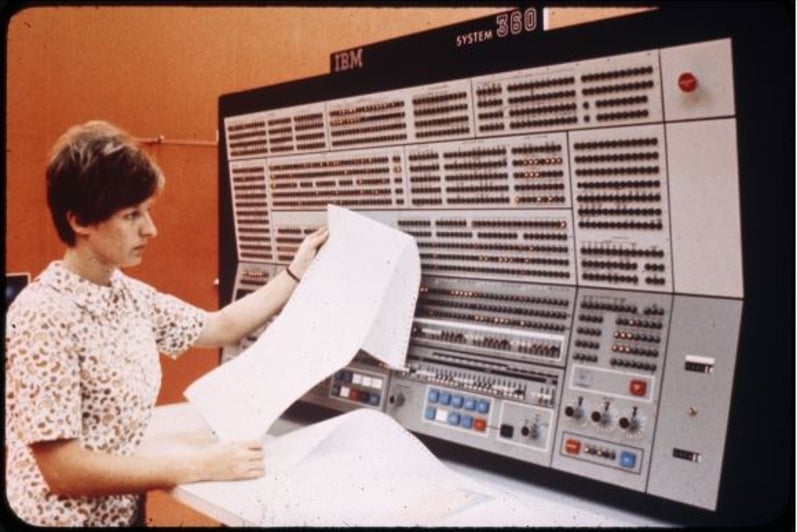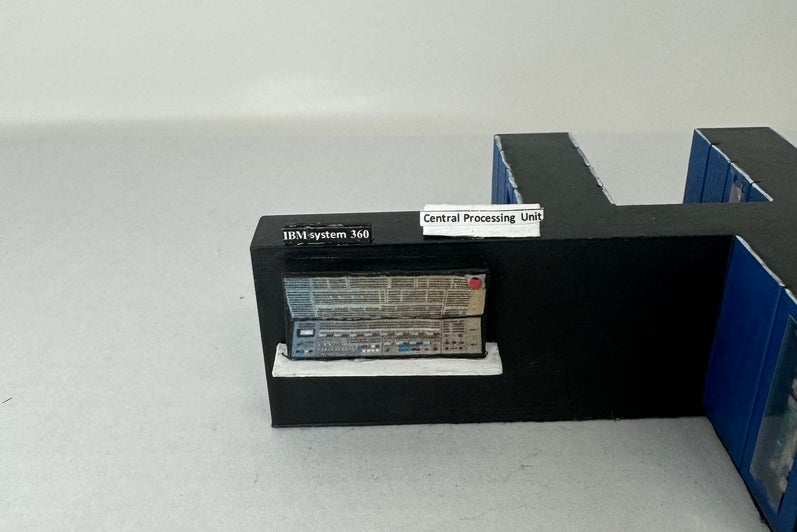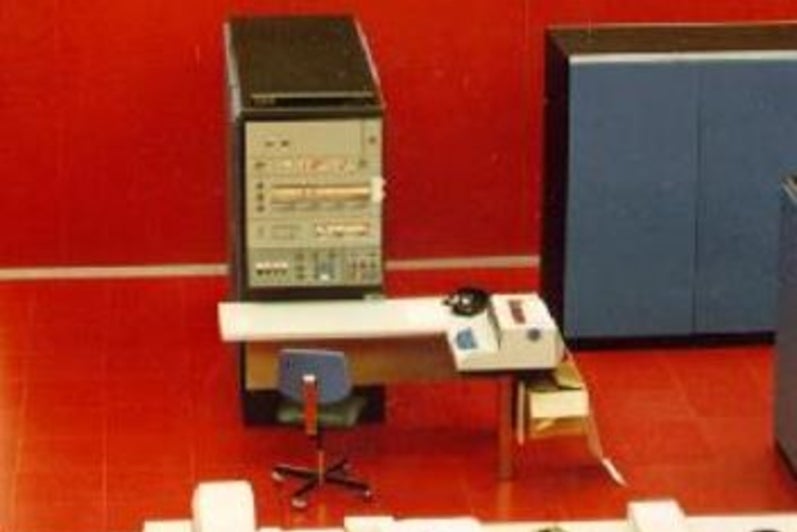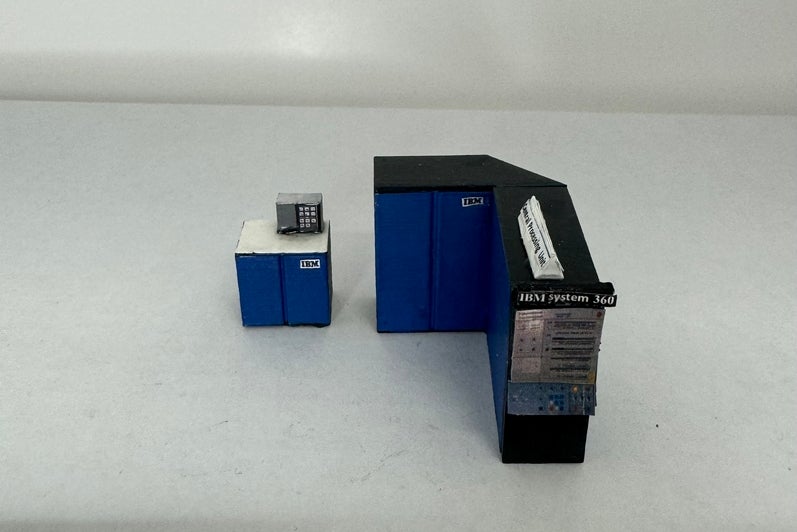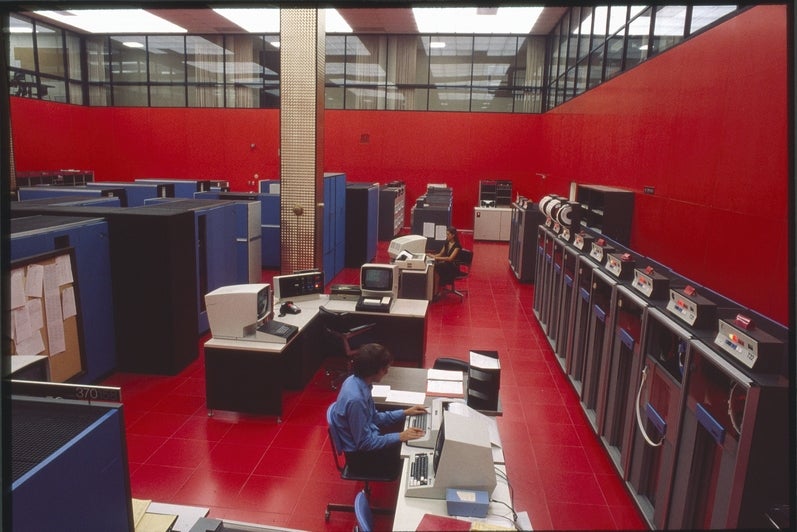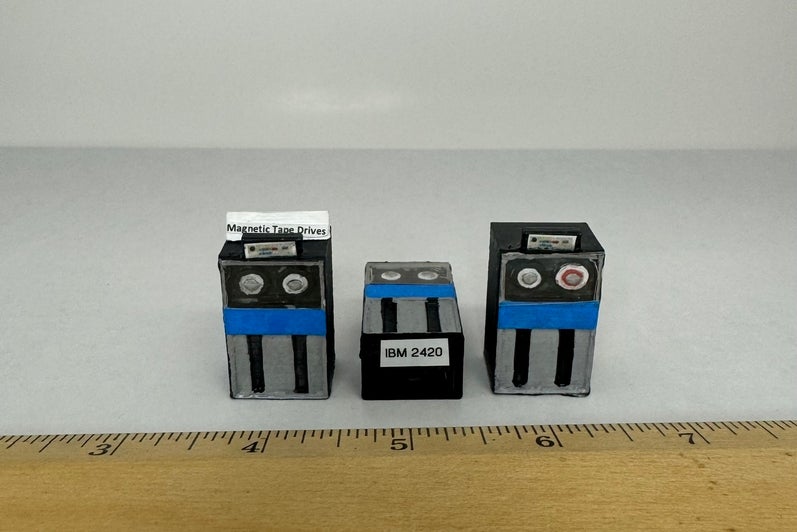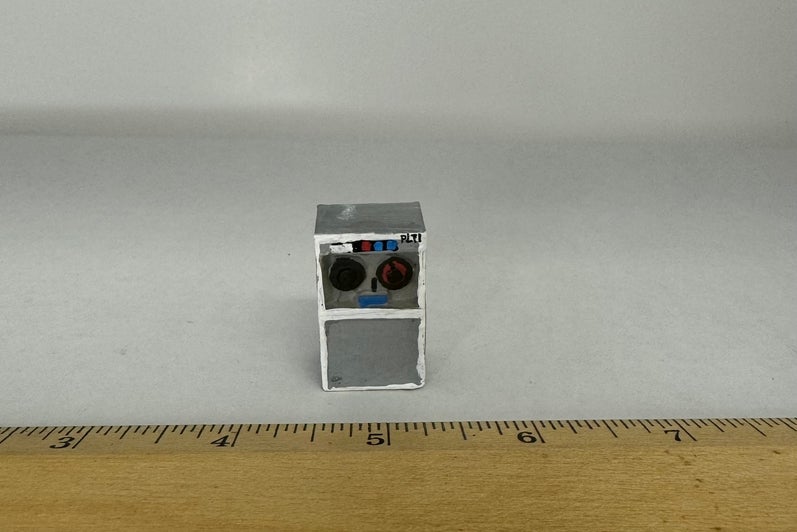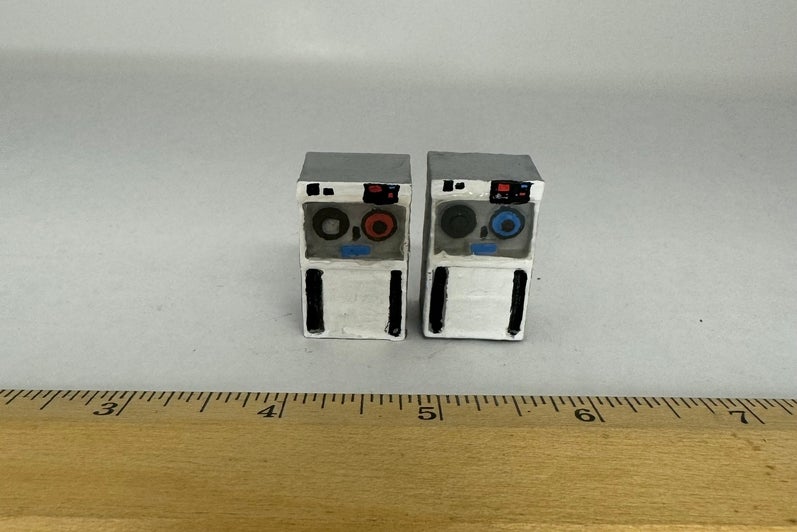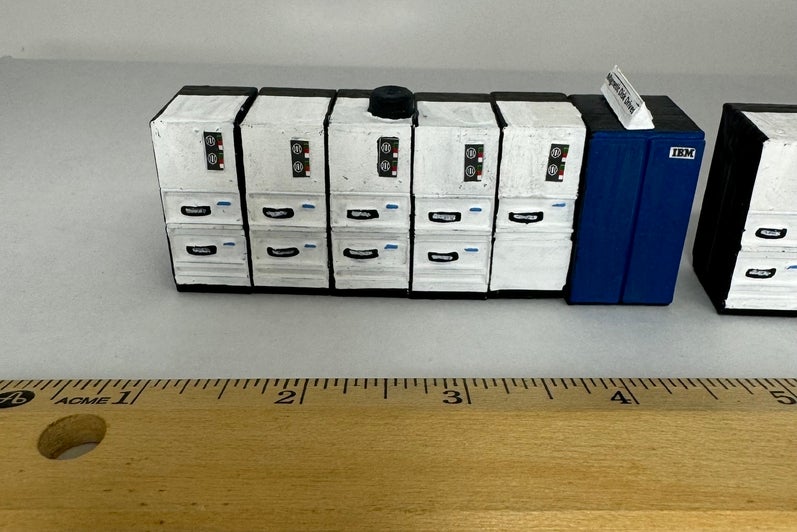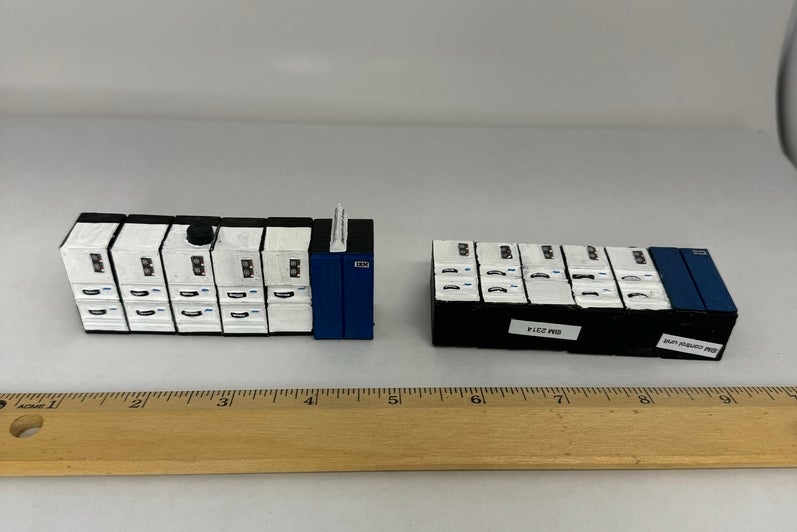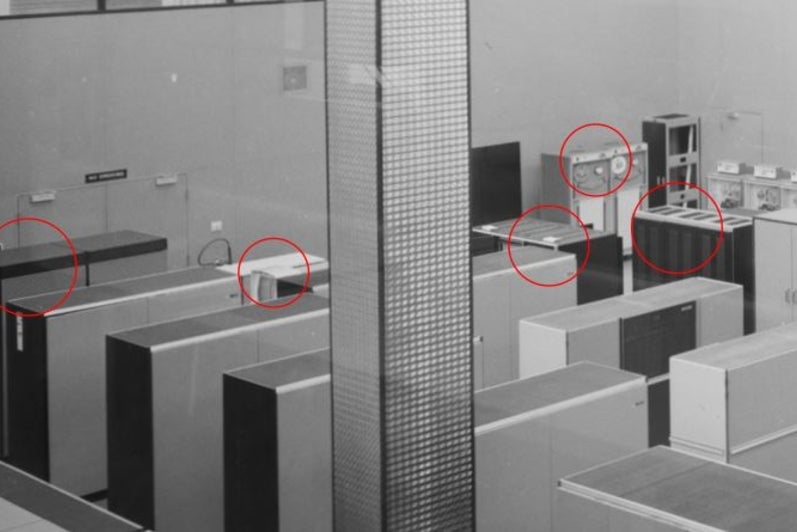By Charlotte Wipp
The Red Room Throughout the Years
To create a diorama of the Red Room I collected many images that could make my model as accurate as possible. One thing I noticed as I continued to find images was that the room's layout would often change by year as the machines were being updated and switched out. Below are photos of different layouts and machines present in the Red Room from 1967 to 1989. Additionally, some machines existed for longer in the room than others, such as the Central Processing Units like the System/360 and System/370. Below are some of the photos that I gathered for my research and more information on some consoles and devices in the room.
Most of the photos were provided by the University of Waterloo Library Special Collections & Archives.
1967
1969
1973
1983
1989
1968
1970
1974
1982
1984
Images Labeled
Errata
A former student provided some helpful notes on the labelled images:
The second picture is a wide view of the Red Room, in which the operator station is labelled as "IBM 1052." This is actually an "IBM 2150 Remote Operator Console." Also in this image some cabinets at the left are labelled "IBM 7074." The IBM 7074 was a computer that predated the System/360, and there is no indication that the university ever had one. In any case, the 7074 looked nothing like the cabinets in this picture, which look like standard System/360 cabinets. These items are most likely channels for the /75, or possibly control units.
The third picture shows some plotters, one labelled "IBM 1627." However on close examination the name CALCOMP is discernible. IBM sold rebranded Calcomp plotters under its own name, but this appears to be an actual Calcomp plotter, known as a Calcomp 565. No name is visible on the larger plotter, but a chronology of computing at the university mentions "the University's Calcomp 763/770 Plotting System which had been purchased in the summer of 1967" along with a picture of a plotter and a tape drive. The items in that picture look suspiciously like the items here labelled as "IBM 563 Plotter" and "IBM Tape Drive." There is little doubt that those two items in picture three are actually a Calcomp 763 Drum Plotter and a Calcomp 770 Tape Drive.
IBM Tape Drives
An issue that I ran into for recreating the Red Room was that the tape drive models would change from year to year. I settled on putting IBM models 2401 and 2420 into the diorama, although from the photos there were many more throughout the lifetime of the room.
Tape drives were used to store data on magnetic tape (usually 7-track or later 9-track reels). The device could both read and write data onto the large reels of tape, the 2420 at 200 inches per second. The tape would wind through a vacuum column system that could keep the tape at a uniform tension while processing it quickly and precisely. Within the vacuum columns were sensors that allowed full control over the tape speed, and could reverse the tape to the desired location when needed.
Magnetic Disk Drive
Magnetic disk drives existed as a storage component for computer systems. The drives contain platters that the systems can be read and write to.
Introduced in 1965, the IBM 2314 accompanied the System/360 and System/370. A single disk pack contained eleven 14" platters, the 2314 had 20 recording surfaces with 200 tracks each storing 7294 bytes per track. Two 360/370 channels could be accessed at once with the device's eight drives that could be pulled out like "Pizza Ovens". A control unit could be added to allow two System/360 channels to access two disk drive systems at once.
IBM 2314
Mysteries in the Red Room 1973
While studying this photo in particular to make the diorama, there were a few object I could not identify. Luckily I did not have to make multiple renditions of the Red Room throughout the years, as that would further increase the unknowns.
If you have any idea what any of these particular objects are, we would love to know!
Notes from the field:
We received some feedback about some of these mystery items:
The first picture shows five unidentified objects circled. The item second from the left in this picture appears to be an IBM 2250 Graphics Display Unit. The 2250 displayed information using vector graphics, so it wasn't restricted to just text. This unit is also visible at the top left in the second picture under 1969.
Pages A.1 through A.4 of the following document describe the 2250 at Waterloo
Methods for producing linear displays of visual graphs by R. Brien Macguire
The second picture, labelled "IBM Plotter Tape Drive, model unknown," is the Calcomp 770 mentioned above.
About the author
Charlotte is a Physics and Astronomy student currently in her 2B term at Waterloo. She enjoys tinkering and creating all forms of art in her free time. She works at the Computer Museum as their current Winter 2024 coop student.
